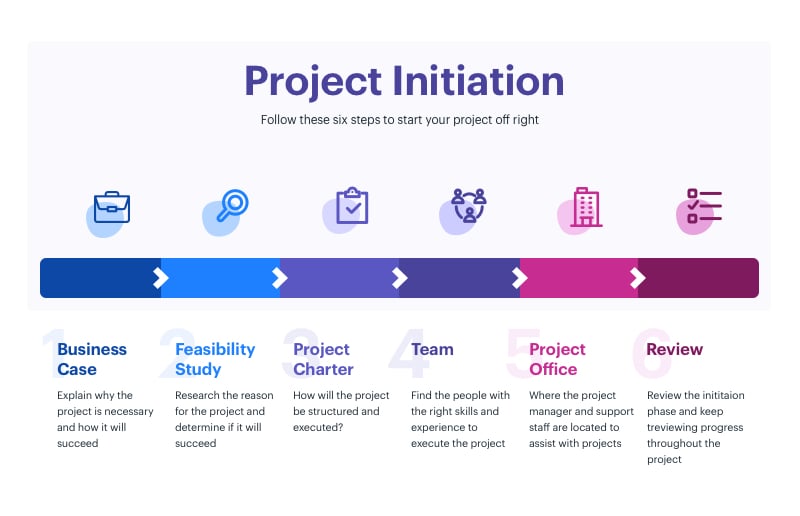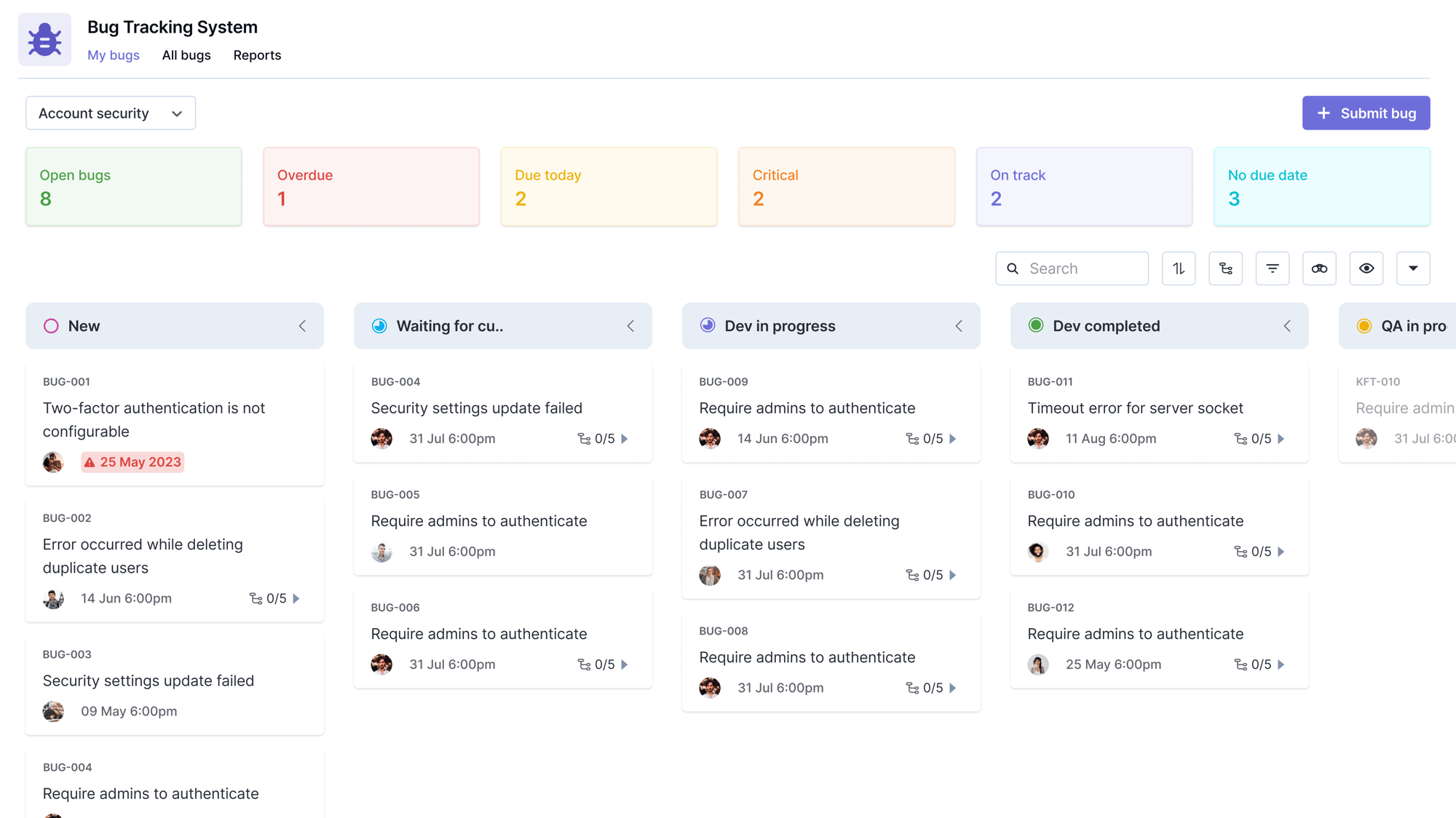In all walks of life, a strong start can significantly increase the chances of achieving success. From tall skyscrapers to a football game, everything requires a strong foundation, and managing projects is no different. Initiation is the first phase in the project life cycle and is often considered the most important.
All projects are temporary endeavors, which means they have a specific timeframe and a lifecycle. For simplicity and greater control, project managers divide an entire project into five distinct phases that are interconnected and which have their own start and end-points
Read on to learn more about the importance of the project initiation process in project management and the steps you should take to ensure the project’s success.
What is project initiation?
Project initiation is the first phase of the project management life cycle and in this stage, companies decide if the project is needed and how beneficial it will be for them. The two metrics that are used to judge a proposed project and determine the expectations from it are the business case and feasibility study.
Why is it important?
- Take major decisions that establish the direction and resource requirements, like the project charter and selecting the project stakeholders, are made during this phase. The stakeholders arrive at a clear objective to ensure everyone stays on the same page in terms of how the project should proceed.
- There will be multiple checks during and after project execution to prevent miscommunication and to ensure the project stays on track throughout its course. However, precious time and resources might get wasted which is undesirable.
- Effective project management requires you to maximize benefits and minimize costs while delivering ‘value’ to the customer. Having a clear project objective helps you achieve all this.
Start strong with workflow software that standardizes project initiation and ensures smooth execution.
Project initiation process – 6 key steps to follow
Now that we have established what project initiation is and why it is so important, it’s time to see what are the key steps in the project initiation checklist and how project managers initiate their projects.

Let’s see how to initiate or start a project right from the scratch:
1. Creating a business case
The business case is an important document that explains how the project’s goals align with the company’s long-term plans. This document explains why should the company spend its technical, financial, and human resources on the specific project.
An ideal business case does not talk about any technical details of the project and focuses solely on the business aspects. It is made to convince the upper management to approve the project and answer their concerns related to possible financial and business-related risks.
2. Conducting a feasibility study
After the approval of the business case, the next step is to determine the likelihood of the project’s success after considering all the factors. This study identifies the high-level project constraints and assumptions of the project and decides whether the project is worth it or not.
Kissflow Project helped thousands of teams work more productively.
3. Establishing a project charter
The project charter is perhaps the most comprehensive and important part of the project initiation process. It answers the 3 Ws to identify the scope/objective, team members, and the possible timeframe of the project.
The charter is, in some ways, the first document of the project that identifies the necessary details like the goals and the constraints of the project. It also identifies the project scope and lists the required resources for the completion of the project.
4. Identifying stakeholders and making a stakeholder register
Communication and negotiations are a huge part of effective project management and a large part of a project manager’s time is usually spent dealing with project stakeholders. PMBOK identifies stakeholders as anyone who can be influenced or has an influence on the project. Project stakeholders can either be internal or external and each type has its own communication requirement.
It’s the responsibility of the project manager to ensure the means and frequency of communication in project management with project stakeholders according to their influence and interest in the project. A common practice is to maintain a stakeholder register or a stakeholder map to decide the frequency and means of communication for each stakeholder according to their influence and interest in the project.
Join a Thriving Community of Project Managers Transforming Work with Kissflow Project!
5. Assembling the team and establishing a project office
No project can be started without a project team. Assembling a working project team and assigning them roles and responsibilities is a vital part of the project initiation phase. Assigning roles and responsibilities early on also increases the overall accountability of the entire team and can help you as a manager in the later phases of the project life cycle.
6. Final review
After performing everything, it’s a good practice to review the entire project initiation stage to ensure you missed nothing. In later stages, you’ll continue reviewing your work as monitoring and controlling is one of the five phases of the project management life cycle.
Start using Kissflow Platform today to enhance your project management efficiency.
Kickstart your projects with a project management tool
Project initiation, without a doubt, requires a clear understanding of the needs of your organization and the immediate steps to be undertaken to get a project off the ground. Furthermore, a free project management tool goes a long way toward easing the process of documenting all the requirements of a project.
The best tool to go with would be a cloud-based solution that allows for project collaboration and painless time tracking. A variety of views coupled with in-depth reporting capabilities would be a great add-on.
Kissflow Project can help you with each aspect of your project, right from project initiation.
Kissflow Project
- is simple and intuitive to use,
- frees you from constantly tracking teammates,
- offers multiple views to visualize projects
- provides “Done”, “In-Progress”, and “On Hold” states for clarity on status,
- gives you access to powerful reports to make data-driven decisions, and
- reminds you when tasks near their deadlines.
Discover how Kissflow's low-code platform helps you achieve faster time-to-market, Book a Custom Demo Now!
Your search for Project Management has landed you here. Wondering why?
As a user, you'll experience the full value of Kissflow by implementing it across departments for diverse use cases rather than just addressing isolated needs like a project management tool for a single team or department.


%20(2).png?width=2000&name=PSE%20Dashboard%20(3)%20(2).png)
.png?width=2000&name=Dashboard%20(5).png)





